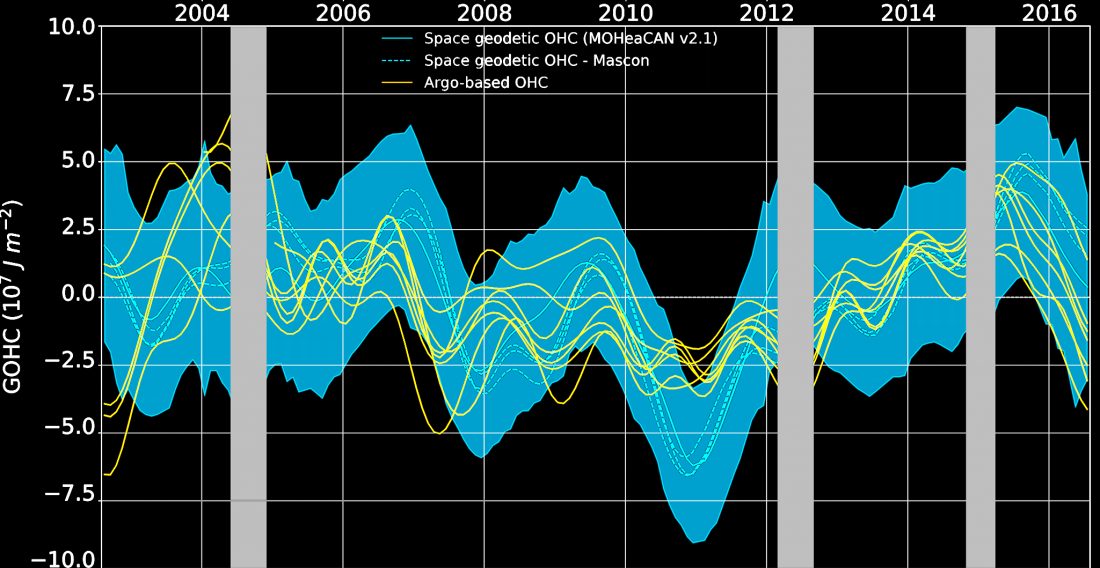Over the last decades, greenhouse gases and aerosol concentrations have been increasing in the atmosphere, disrupting the balance in the Earth system between incoming and outgoing radiation fluxes. Part of the outgoing longwave radiation being blocked, the system has reemitted less energy towards space than it has received from the Sun. This imbalance at the top of the atmosphere, known as the Earth energy imbalance (EEI), is extremely difficult to estimate since it is 2 orders of magnitude smaller than the mean incoming solar radiation.
More than 90% of the excess of energy stored in the Earth system is accumulated in the ocean, due to its high thermal inertia and its large volume. Therefore, variations of the global Ocean Heat Content are a good proxy of the EEI variations.
A recently published article reports about a space geodetic estimation of the Ocean Heat Content (OHC) changes at global and regional scales, based on the combination of space altimetry and space gravimetry measurements. Such estimate is used to derive global variations in the EEI, with realistic quantification of its uncertainty.
The result is an output of the Permanently Open Call MOHeaCAN project, whose objectives are now pursued within the larger Regional Initiative 4DAtlantic-OHC project.
Marti, F., Blazquez, A., Meyssignac, B., Ablain, M., Barnoud, A., Fraudeau, R., Jugier, R., Chenal, J., Larnicol, G., Pfeffer, J., Restano, M., and Benveniste, J.: Monitoring the ocean heat content change and the Earth energy imbalance from space altimetry and space gravimetry, Earth Syst. Sci. Data, 14, 229–249, https://doi.org/10.5194/essd-14-229-2022, 2022.

